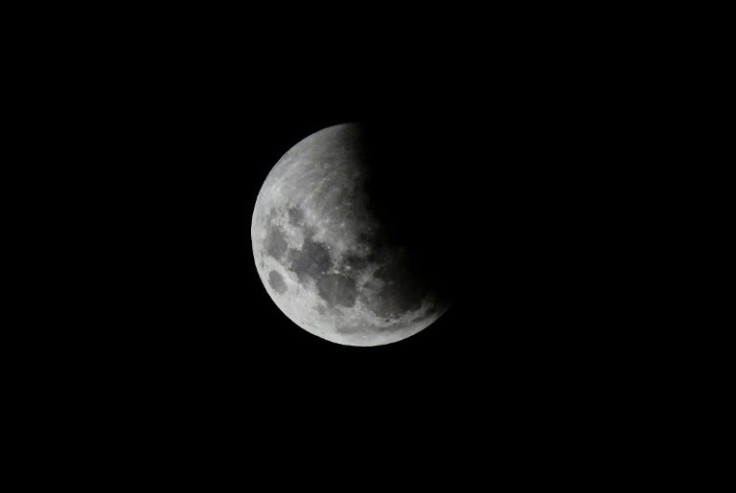Watch The Longest Partial Lunar Eclipse In Six Centuries

The longest partial lunar eclipse in 580 years is expected to occur before dawn on Friday across the entire country.
This celestial phenomenon will last three hours and 28 minutes, according to NASA. This will be the last lunar eclipse of the year.
The November beaver moon is expected to begin at 1:03 a.m. ET and reach peak eclipse at 4:03 a.m. ET on Friday. For observers on the West Coast, it begins just after 11 p.m. PT on Thursday and reaches a maximum at 1 a.m. PT on Friday, NASA forecasted.
"Partial lunar eclipses might not be quite as spectacular as total lunar eclipses – where the moon is completely covered in Earth's shadow – but they occur more frequently," NASA said.
A lunar eclipse happens when “the Sun, Earth, and a full Moon form a near-perfect lineup in space,” forming a deep red color and leaving behind "only a silvery sliver of the moon’s southern edge peeking out," the American Astronomical Society said.
“The Moon gradually glides into Earth's shadow, until most of the lunar disk turns from silvery grey to an eerie dim orange or red. Then events unfold in reverse order, until the Moon returns to full brilliance,” the society of professional astronomers said.
The difference between a total and a partial lunar eclipse is that in the total eclipse, the entire Moon falls within the darkest part of Earth’s shadow, called the umbra. Meanwhile in the partial eclipse, up to 99.1% of the Moon’s disk will be within Earth’s umbra, NASA noted.
The website timeanddate.com is a reference to help find when the lunar eclipse will start or end in different areas, and what it will look like at certain times, Shannon Schmoll, director of the Abrams Planetarium at Michigan State University, told the Wall Street Journal.
The lunar eclipse has been trending on Twitter from people sharing their excitement for the blood red moon.






